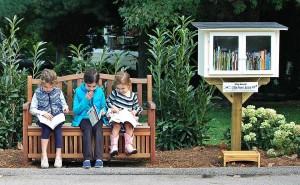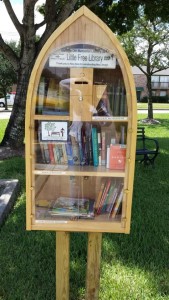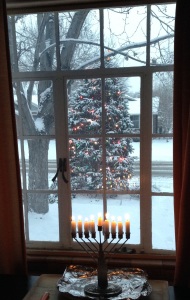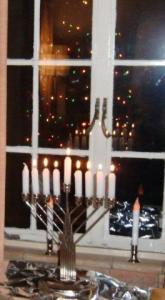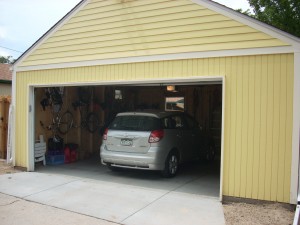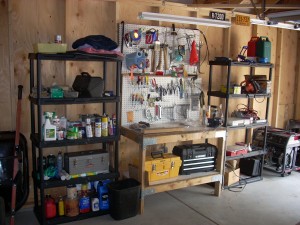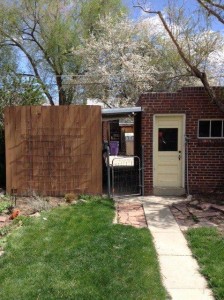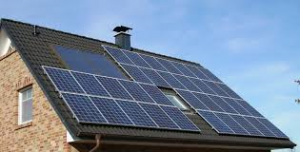
Solar Panels
Carol and I are concentrating on how we use energy. Watching “Cosmos” with Neil DeGrasse Tyson pointing to the sun and saying, “It’s Free!” is partly responsible. I did a lot of research for my talk on Front Range Colorado flooding. One conclusion I reached is that the climate change we are now experiencing will lead to more floods.
Releasing fossil carbon into the atmosphere is setting up a worldwide crisis of unparalleled magnitude. Drought, wildfires, floods, sea level rise, and pollution will affect millions worldwide. The environmental changes have already increased political instability. Syria and sub-Saharan Africa are cases in point.
Here in the U.S., rhetoric and denial are the most visible response to the looming disasters. Those who make money from fossil energy deny the problem and buy inaction in Congress. Public utilities seem to be much more interested in selling gas and power produced from coal and gas than switching to renewables. Wind farms are on the increase and more commercial solar power installations are being built, but the pace is fairly slow.
Germany is a leader in switching to renewables, but recent stories that over 70 percent of production is from renewables is exaggerated. The fact is that their wind and solar production is increasing, while coal use is declining. China is starting to move to renewables, but is the world leader in coal use, and coal production is increasing. In China, 66% of their power comes from coal compared to 49% in the U.S. The switch to gas from coal is on, driven by cheaper gas (from fracking) and the high cost of coal plant pollution controls. Burning gas has about half the carbon footprint of coal, but it is still burning huge amounts of carbon sequestered millions of years ago.
Worldwide people and governments are starting to respond to the dangers of fossil fuel generated climate change, but slowly. So what are we to do? Join the grassroots green energy movement. People use all this energy, so people have to use less. Less gasoline, less natural gas, less electricity, and most of all, less coal.
So what is a couple from Denver to do? We aren’t much for marching in the streets or being rabid environmentalists, but we want to do our part. Activism begins at home. In our case, home is a brick bungalow built in 1937, when builders were not concerned with energy efficiency. The main thing builders did in the 1930’s did was build smaller houses. Ours has 830 square feet on the main floor. It is a far cry from the 2400 square foot houses that are today’s norm.
We did add a 400 square foot sunroom that we can close off from the rest of the house. In the winter, it is at 40 degrees, and an exhaust fan pulls cool air from the basement in summer. We have a modern high efficiency furnace and water heater. We have increased the attic insulation twice, first to R36, then to R50. The original steel casement windows are terrible for leaking cold air in winter, and hot air in summer. We have historical designation on the house which means keeping those windows, but we installed inside storm windows that stop those wintry breezes.
Carol forces me to tolerate 68 degrees in winter and 78 degrees in summer. That mainly means either more or less clothes depending on the season. At night the programmable thermostat is set for 56 degrees, but the house seldom cools off that much. I did break down and get some fleece lined slippers instead of my beloved L.L. Bean moccasins. The basement, with my man cave, gets cold. I guiltily run an electric heater. Someday we will insulate those cold basement walls.
When we increased the attic insulation the first time we also put in attic ventilation. We had rooftop vents installed and put a large vent in the north gable to introduce cooler outside air. When we re-roof we will add more vents. Prior to that, the only ventilation was a small vent over the entryway. It sure did get hot up there.
The air conditioner has a device provided by our electric utility that runs it less often during periods of high demand for power on hot days. To reduce air conditioner use we open the house up in the evening and run fans to exhaust hot air and bring in cooler outside air. Denver averages a thirty degree difference between daytime and nighttime temperatures. Texans, eat your hearts out. When we have to have a new roof in the next few years we will add an attic fan. They are noisy, but they exhaust hot air in the house and cool the attic.
The big thing we are doing now is adding solar electricity with our new garage. We have needed a garage for some time. We have never been able to park a car in the old one, designed for a 1937 Ford. My shop area, the gardening stuff, until recently my motorcycle, and the bicycles filled it up. Our block has an alley, which is a crime conduit. We have had several break-ins, and want our cars inside.
The solar panels will go on the garage and sunroom roofs. When we replace the roof on the older part of the house, we will add enough panels to produce all the power we need. We will be at about 80% with the house and sunroom panels.
So we are slowly going green. It is possible for individuals to make a difference. If more of us do it, it will pressure governments and the utility companies to get serious about energy. It will take grass roots action to make it happen. Boulder, Colorado is threatening to take over Xcel energy’s infrastructure in their city. That is a message to the utility companies that they have to get serious about renewable energy or lose their customers city by city. I am hopeful that meaningful change is going to happen. I don’t think it is enough to stop some of the climate changes we are seeing, but we are slowly starting to try living with our planet, not exploit it to our extinction.
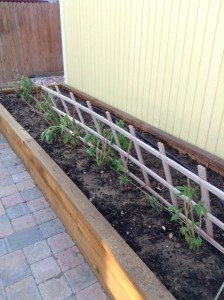 I am married to an artist. She paints, she writes (lately, haiku), is doing lots of cooking with our new kitchen, and she gardens. It’s spring, so a lot of our effort is going into the garden. I willingly garden, but it is mostly the labor part. I dig, I built a cold frame and re-glazed it, I water and help plant. I do not, however decide what to plant or where. I am getting better at pruning with my left-handed Felco Pruner. I mow, compost, rake, clean up, water, and haul.
I am married to an artist. She paints, she writes (lately, haiku), is doing lots of cooking with our new kitchen, and she gardens. It’s spring, so a lot of our effort is going into the garden. I willingly garden, but it is mostly the labor part. I dig, I built a cold frame and re-glazed it, I water and help plant. I do not, however decide what to plant or where. I am getting better at pruning with my left-handed Felco Pruner. I mow, compost, rake, clean up, water, and haul.
